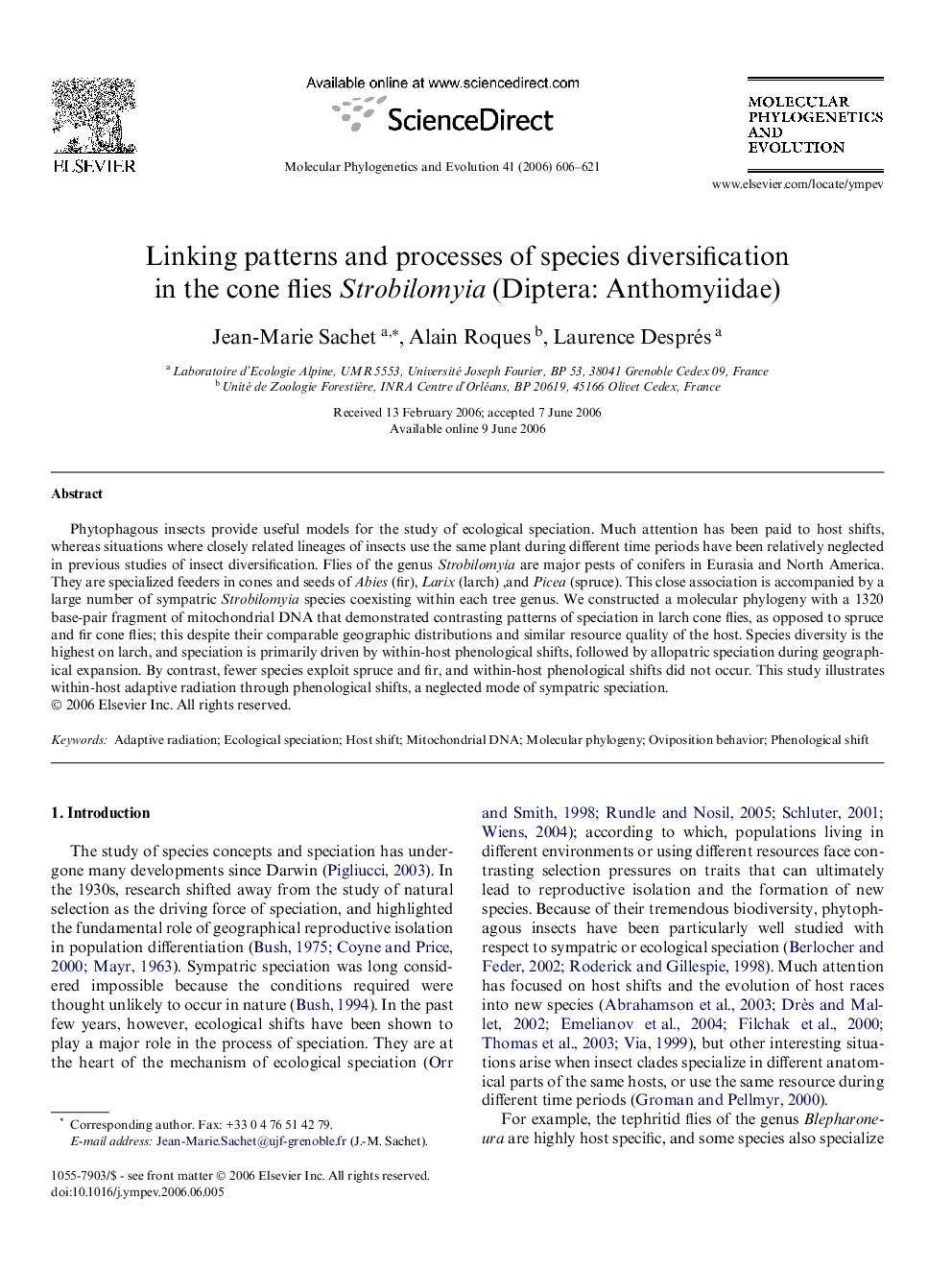| Article ID | Journal | Published Year | Pages | File Type |
|---|---|---|---|---|
| 2835812 | Molecular Phylogenetics and Evolution | 2006 | 16 Pages |
Phytophagous insects provide useful models for the study of ecological speciation. Much attention has been paid to host shifts, whereas situations where closely related lineages of insects use the same plant during different time periods have been relatively neglected in previous studies of insect diversification. Flies of the genus Strobilomyia are major pests of conifers in Eurasia and North America. They are specialized feeders in cones and seeds of Abies (fir), Larix (larch) ,and Picea (spruce). This close association is accompanied by a large number of sympatric Strobilomyia species coexisting within each tree genus. We constructed a molecular phylogeny with a 1320 base-pair fragment of mitochondrial DNA that demonstrated contrasting patterns of speciation in larch cone flies, as opposed to spruce and fir cone flies; this despite their comparable geographic distributions and similar resource quality of the host. Species diversity is the highest on larch, and speciation is primarily driven by within-host phenological shifts, followed by allopatric speciation during geographical expansion. By contrast, fewer species exploit spruce and fir, and within-host phenological shifts did not occur. This study illustrates within-host adaptive radiation through phenological shifts, a neglected mode of sympatric speciation.
